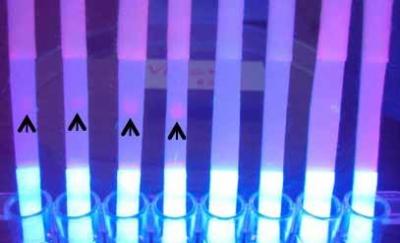
Periprosthetic infection becomes a dilemma when the signs and symptoms that commonly coincide are absent, or when infection occurs in the immediate post-operative period when the usual biologic markers such as erythrocyte sedimentation rate (ESR) and C-reactive protein (CRP) are still elevated from the surgical procedure. The use of interleukins has become
increasingly utilised in the clinical setting, and their use, as prognostic and diagnostic markers in sepsis, trauma, and critical care have started to expand. The interleukins, specifically interlekin-6 (IL-6), have been shown to be superior indicators of a post-operative inflammatory response due to its return to baseline levels forty eight to seventy two hours postoperatively whereas CRP and ESR levels are typically elevated well above normal for weeks.
Our major objective is to measure levels of IL-6 and CRP from blood / serum/synovial fluid / lavage fluid samples taken from human patients with a periprosthetic joint infection with our novel multiplex quantum dots (QDs) or colloidal gold nanoparticles (CGNs) based lateral flow immunoassay. Development of the fluorescence or colorimetric reader device, and prove
our detection ability has improved sensitivity compared to standard ELISA techniques. In proposed work, we are trying to develop the lateral flow immunoassay using QDs and CGNs for diagnosis of orthopedic implant associated infection. We have successfully synthesised the MPA capped CdTeQDs by hydrothermal method and CGNs by salt reduction method. QDs and CGNs were characterised by various techniques. Following the optimisation of synthesis process, QDs were bio-functionalised by SPA conjugation on the surface. Conjugation of protein on QDs was characterised by AFM, gel electrophoresis, circular dichroism, TEM analysis and FTIR. The biosensor i.e., IL-6 antibody bound on SPA-QDs and CGNs was developed. This biosensor has been used for the development of LFIA and we have tested IL-6 and CRP concentrations on the nitrocellulose strips.
PorFloRTM is the name of the device we have developed, it is a portable fluorescence LFIA strip reader. It is a small hand held device that records the fluorescence spot and change in fluorescence intensity of the spot on the NCM strip. Detection of fluorescence as well as visual color change on the nitrocellulose strip, calibration and validation of the technique is being done using control, standard, infectious samples. We have started testing our LFIA as well as the reader system for the detection of the standard CRP as well as IL-6 antigens and clinical samples; the results are promising and we are in process of comparing the sensitivity of the developed system with the gold standard techniques such as ELISA.
The detection technique may be extended to detect more biomarkers such as polysaccharide intercellular adhesin (PIA), poly-β-1,6-N-acetylglucosamine (PNAG), etc. that are involved in process of implant associated infections specifically. This nanodiagnostic technique utilises unique optical properties of QDs as well as CGNs. The antigenic biomarkers used for detection will provide sensitivity and specificity. This point-of-care (POC) nanodiagnostic test might be very useful for orthopedic surgeons to ensure about infection status of implanted device. We received the prestigious Tata Innovation Fellowship Award from DBT for this translational work on diagnosing orthopedic implant related infections
Prof. Rohit Srivastava
